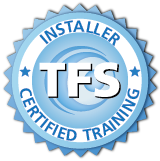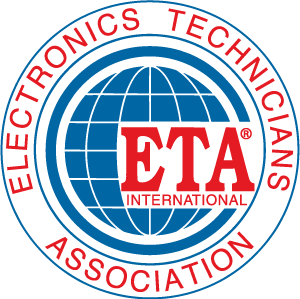Objectives
This course incorporates hands-on training of fiber terminations, cable preparations, installation practices and certification testing procedures. Students will learn skills applicable to all the functions required to safely and competently install advanced fiber communications in transit cabling deployments.
This course will allow students to:
- Understand the Technology and standards deployed in transit systems
- Review SONET and the IEEE 802 Standards Networks
- Understand the “Mobile Wireless” networks being deployed
- Demonstrate basic skills needed to assemble, wire, and test various Transit Systems deployed.
- Understand passive and active equipment
- Learn testing procedures specific to Transit deployments
Lectures
- Introduction to Fiber Optics:
- Fundamentals
- Theory
- History
- Performance Characteristics
- System Components including Transmitters, Receivers
- Fiber Optic Installation Practices:
- Optical Networks
- Techniques, Standards & Codes
- Cable Types
- Connectors
- Splicing
- Enclosures & Panels
- Tools & Test Equipment
- System Design & Loss Budgets: Equipment, Techniques & Applications
- Fiber Optics for Transit:
- Video surveillance
- SCADA Systems
- Transit control applications
- WiFi
- CCTV
TL-01B – OSP Loose Tube Armored Cable Preparation
- Understand cable jacket markings.
- Properly prepare an OSP cable for jacket removal.
- Properly use a jacket stripper or ringing tool.
- Strip off the jacket using the pull strings.
- Strip off all inner binders using a seam ripper.
- Handle the buffer without damaging the fiber within.
TL-01E – Buffer Tube Fan Out Kit (BTFO)
- Set up and position an OSP cable in preparation for the BFTO assembly.
- Strip off the buffer tube using a ring cut tool.
- Clean the gel off all fibers within a buffer tube without damaging any of the fibers.
- Properly insert the individual fibers into the BFTO furcation tube module.
- Properly assembly and secure the completed BFTO housing onto the buffer tube.
TL-02A – Fusion Splicing
- Properly prepare an inside plant cable for mounting into a splice tray.
- Demonstrate the proper way to strip, clean, cleave, and fusion splice 900µm fiber.
- Properly pre-trim the individual fibers into the splice tray before fusion splicing.
- Properly set up and fusion splice the individual fibers together.
- Properly wrap (form & dress) the individual fibers back into the tray.
TL-03A – Mechanical Splice Connector
- Properly prepare a simplex cable for this connector termination method.
- Properly use a precision cleaver for this termination method.
- Successfully mate a cleaved cable end into a mechanical splice-on connector.
- Test the assembly to TIA Tier 1 standard.
TL-03F – Splice-On Connector (Single Mode)
- To understand how to adapt a fusion splicer for a generic fuse-on connector.
- To demonstrate the ability to adapt fiber strip measurements to any fusion splicer.
- To perform a visual inspection when completed and properly test to TIA Tier 1 standard.
TL-04A – Mechanical Splice
- Perform a mechanical splice with < .3 dB of attenuation.
- Explain the benefits of Index Matching Gel.
- Use a precision cleaver to prepare fibers for splicing.
- Calculate A-B and B-A loss.
TL-05A – Pigtail Fusion Splice
- Perform a fusion splice with ≤ .1 dB of attenuation.
- Use a precision cleaver to prepare fibers for splicing.
- Calculate A-B and B-A loss.
TL-06A – Power Meter & Light Source Testing
- Use a VFL (Visual Fault Locator).
- Understand the functions of Light Source & Power Meters.
- Properly calibrate or reference the instruments prior to testing.
- Test fiber optic segments and record the results.
- Know the purpose of and how to connect reference patch cords.
- Make accurate loss measurements.
- Perform Bi-Directional Testing.
- Know storage and download capabilities for reporting.
TL-07A – Optical Time Domain Reflectometer (OTDR) Testing
- Make a reliable connection from the OTDR to the Fiber Under Test. (FUT).
- Use a USB optical probe to inspect the connectors.
- Be familiar with launch or pulse suppressor boxes and cables.
- Determine parameters to set up classic OTDR.
- Interpret typical reflective events in an OTDR trace test.
- Know parameters that help make more accurate location of breaks.
- Use an OTDR in a real-time mode during cable installation and splicing.
- Save and print OTDR trace reports.
TL-12A Wall Mount Segment Assembly (Pigtails) & Testing
- Properly prepare a 12F distribution cable for installation to wall mount enclosures.
- Properly perform one of the most basic splicers’ tasks, fusion splicing of “Pigtails”.
- Demonstrate the proper way to strip, clean, cleave, and fusion splice 900µm fiber.
- Properly wrap (form & dress) the fused fibers back into the splice holders.
- Test the completed assembly to TIA Tier 1 standard.
TL20-A – Determining Power and Loss Budgets
- The student will learn to evaluate a simple campus fiber segment.
- The student will learn to determine if a fiber segment will perform properly.
Prerequisites: None
Knowledge or experience in the areas of Fiber Optic Advantages and Applications, Cables, Connectors and Terminations, Enclosures and Panels, and Test Equipment would be helpful, but is not required.
Target Audience
Students that have a desire to work in the field testing and terminating fiber optic networks leading to a certification.
Certified Fiber Installer is designed for new or experienced personnel seeking a deeper understanding of the installation of fiber optic cabling systems. This course is excellent for anyone involved in the construction, education, commercial, industrial, or utility markets and anyone who designs, installs, maintains, or tests fiber optic cabling systems.



